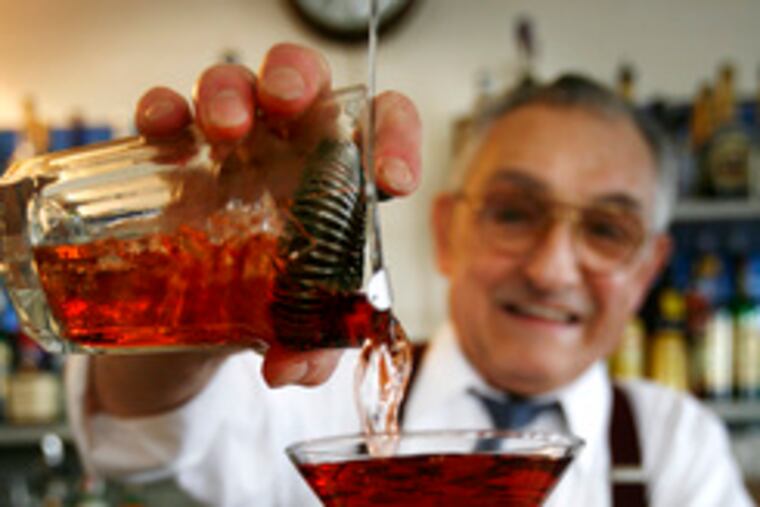Negroni drinkers are a sentimental lot
The little-known gin-sweet vermouth-Campari cocktail often brings back memories of the exotic kind.

It was a fellow by the musical name of Manuel Roig-Franzia who introduced me to the Negroni, the most elegant - and unquestionably most adult, and certifiably legendary - classic cocktail (an aperitif, if you will) that you've likely never had the sweet pleasure of meeting.
Even at the Swann Lounge in the Four Seasons Hotel, hardly known for edginess, they mix them about one to 500; that would be one Negroni ordered a week, versus 500 vodka martinis and their ilk.
So finding a bartender sensitive to its subtleties is no simple matter: The Negroni, on paper, is neatly gin, sweet vermouth and Campari, equal parts, stirred on ice and strained, with a twist of lemon, or fresh orange, or for fancier presentations, perhaps freshly burnt orange.
That is your basic Negroni 101, at least.
But I'm getting ahead of myself. I was open to suggestions at the time our dinner with Roig-Franzia, being feted on the occasion of his dispatch to Mexico in the service of the Washington Post: He'd had a sentimental and long-standing connection to the drink involving a Spanish forebear - and matador, to boot.
There's always some sentimental attachment. A long-retired spy I was dining with one evening ordered a Negroni because it reminded him of his salad days in Paris. Others are transported to the Gritti Palace Hotel in Venice, where Hemingway was said to put them away while writing "Across the River and Into the Trees." A bar in Shanghai comes up. Or New York City's Algonquin Hotel at dusk: "If you can't be in Florence [where the Italian count Camillo Negroni reputedly inspired the drink]," goes a posting on a cocktail Web site, "or on the Via Veneto, or Harry's in Venice at mid-afternoon, a Negroni at the Algonquin will hold you over."
I was, as I say, in the mood to entertain something new. My winter go-to classic - the vermouth-sweet whiskey Manhattan as perfected by Narberth artist and mixologist Barrie Maguire - was a bit big and burly for the approach of warmer months.
The Negroni had a rosy gleam and silky brightness and that signature uptick of Campari bitters in the finish. It should be stirred, opines bartender Toby Cecchini, so ice shards don't mar its sanguine limpidity: "That first sip should be like drinking from a cool brook that happened to perambulate past a spice bazaar on its route."
There are reasons that classic cocktails - like classic salads (the Caesar, for instance, a Mexican import, though inspired by an Italian chef), and classic dishes (a simple steak au poivre) - stand the test of time: They deliver a surprising flavor experience so remarkably original, so unmistakably itself, that they enter a magical, even mystical, realm.
In the well-made Negroni, the experience comes from the juniper edge of the gin, tamed by the syrupy sweetness of the vermouth, then aroused again with the Campari's sexy bite of herbal - it contains 60 ingredients - bitters.
I have found a mellow rendition (made with Philadelphia's softer, citrus-y Bluecoat Gin) at the always meticulous bar of Southwark in Queen Village. And a decidedly decent one at Moonstruck, the Italian classic in Fox Chase.
But I was not prepared for the beautiful Negroni poured by natty bartender Ron Serafino at Dante & Luigi's, the 100-year-old, red-gravy corner place at 10th and Catherine in South Philadelphia. Serafino is an old pro who worked at Palumbo's until it burned in 1994.
His secret: Dial down the Campari a touch, and the vermouth a lot - by a half or even more.
I'll be passing this along to my son Coan in Los Angeles. He has become a devotee himself, one more grateful fan of the legendary Negroni - and an indirect convert, you might say, of the charmingly persuasive Manuel Roig-Franzia.